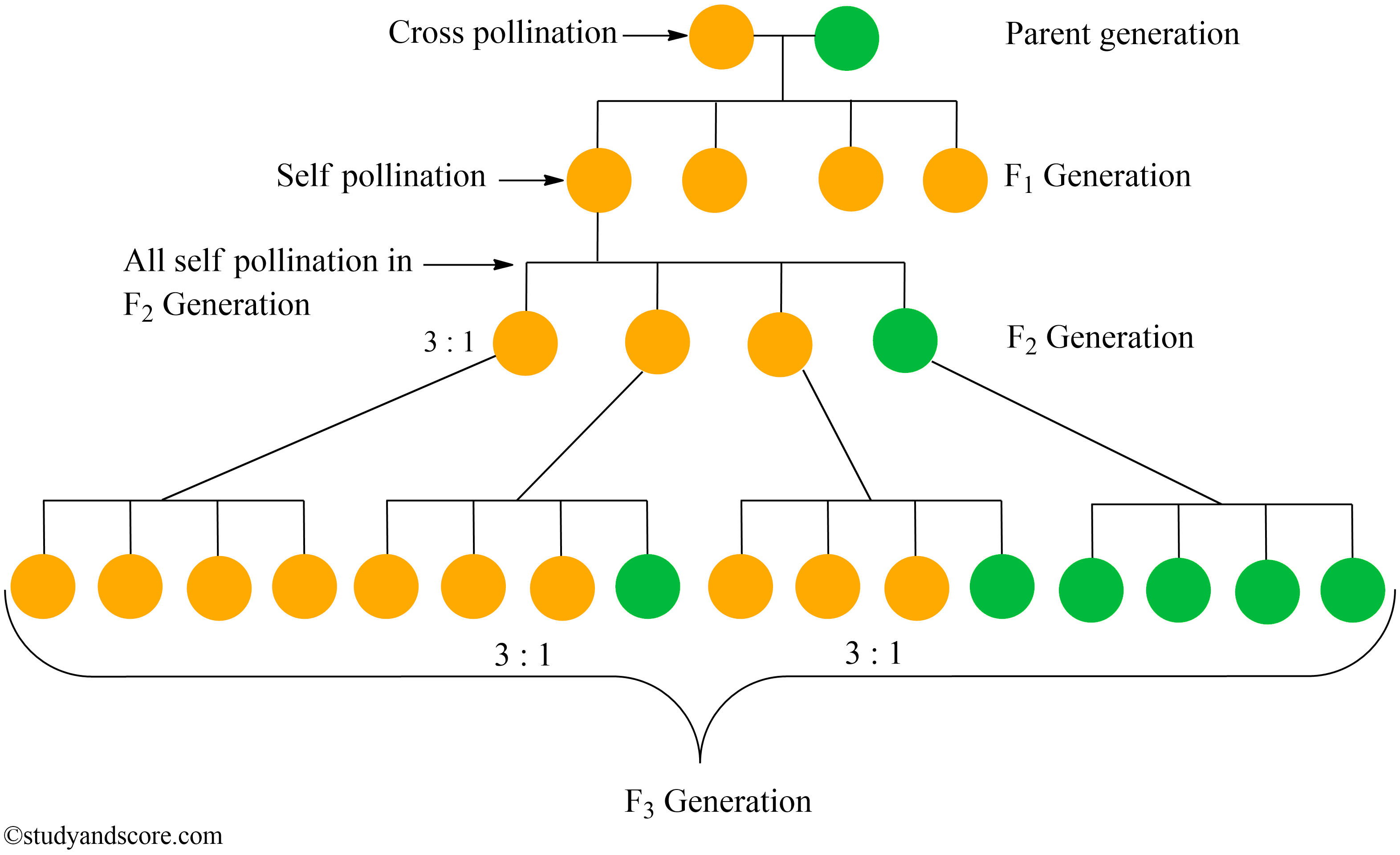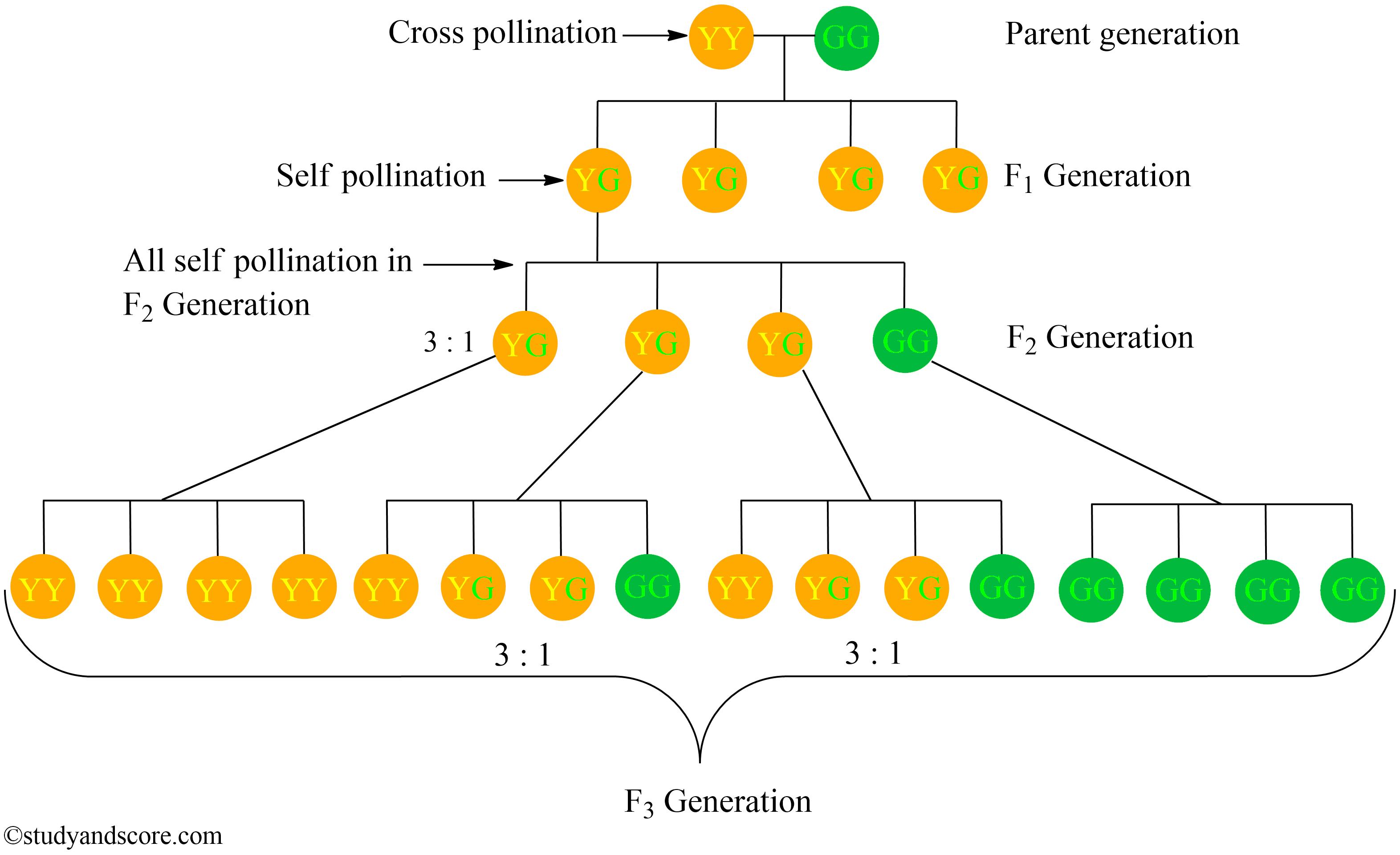Farmers and herders have been breeding their plants and animals selectively for thousands of years. This kind of selective breeding leads to production more useful hybrids. Initially they did not know the actual mechanism behind the inheritance of characters. Consequently with the developments made in various branches of science, we finally came to know the actual mechanism behind the selective plant breeding experiments.
The invention of better microscopes in 1890s allowed natural scientists to realize the basic facts of cell division and sexual reproduction. The attention of genetic research was then shifted to understanding what really happens behind the screen during i.e. transmission of hereditary traits from parents to children. A number of assumptions were proposed to clarify the concept heredity, but finally it was Johann Gregor Mendel who set the basis for the study of genetics. His ideas have been published in 1866 but his ideas went unnoticed until 1900.
Although Mendel experimented with plants, the primary principles of heredity that he discovered also apply to humans and other animals. This is because the mechanisms of inheritance are basically same for all complex life forms.
Mendel selectively cross-bred over 28,000+ common pea plants for many generations and he discovered that certain characters show up in offspring without any mixing of parent characteristics. For example, the pea flowers are either purple or white and intermediate colors do not appear in the offspring of cross-pollinated pea plants. Mendel observed the following seven traits that are easily recognized and these traits superficially occur only in one or two forms.
![]()
Flower color is purple or white
![]()
Seed color is yellow or green
![]()
Flower position is axial or terminal
![]()
Pod shape is inflated or constricted
![]()
Stem heigth is long or short
![]()
Pod color is yellow or green
![]()
Seed shape is round or wrinkled
![]()
During 19th century most of the genetic researchers believed in “blending theory”. This theory states that, inherited characters blend from generations to generations. Hence Mendel carefully selected the characters which do not show up in offsprings with intermediate forms. But later it was verified that this theory was wrong. Another equally wrong theory known as "pangenesis" was proposed by Charles Darwin. This theory proposed that inherited "elements" in our bodies are altered by the things we do during our lifetime. These altered elements were thought to migrate via blood to the reproductive cells and subsequently could be inherited by the next generation.
Mendel chose common garden pea plants for his research because,
In his experiments, Mendel was able to selectively cross-pollinate pure bred plants with particular characters and observe the result over many generations. This was the foundation for his inferences about the nature of genetic inheritance.
While experimenting with cross-pollinating plants which produced yellow or green pea seeds, Mendel found that the offspring of first generation (f1) always had yellow seeds. But, the offspring of second generation (f2) regularly has a 3:1 ratio of yellow to green seeds.
This 3:1 ratio also followed in later generations (f3, f4, f5…) also. Mendel understood that this was the key to realize the basic mechanisms of inheritance.

Mendel concluded three important points from his experiments
It is important to note that, in Mendel’s experiments, the starting parent plants were homozygous for pea seed color. Each parent had two identical alleles of the gene for this character. The plants of first generation (f1) were all heterozygous. Offsprings have inherited two different alleles-one from each parent plant. This can be understood more clearly when we look at actual genetic makeup (genotype) and physical characteristics (phenotype).

Each of the offspring of the first generation gets a yellow allele from one parent and a green allele from another parent. When these plants from first generation are breed, they have an equal chance of passing on either yellow or green alleles to each offspring.
Among all the seven pea plant characters experimented by Mendel, on character appears to be dominant over the other. In other words we can say that one character masked the presence of other. Let us consider the genotype for pea seed color to be Yg (heterozygous). Now phenotype is yellow. However, the dominant yellow allele will not alter the recessive green allele in any way. Both alleles can be transferred on to the next generation unchanged.
Mendel, on the basis of the results he obtained from his experiments formulated three laws:
These laws are explained in later posts…

Hope you have liked this post.
Please share it with your friends through below links.
All the very best from Team Studyandscore
“Study well, Score more…”
- Share with your friends! -
Login to post your comment here...
- or with social Account -